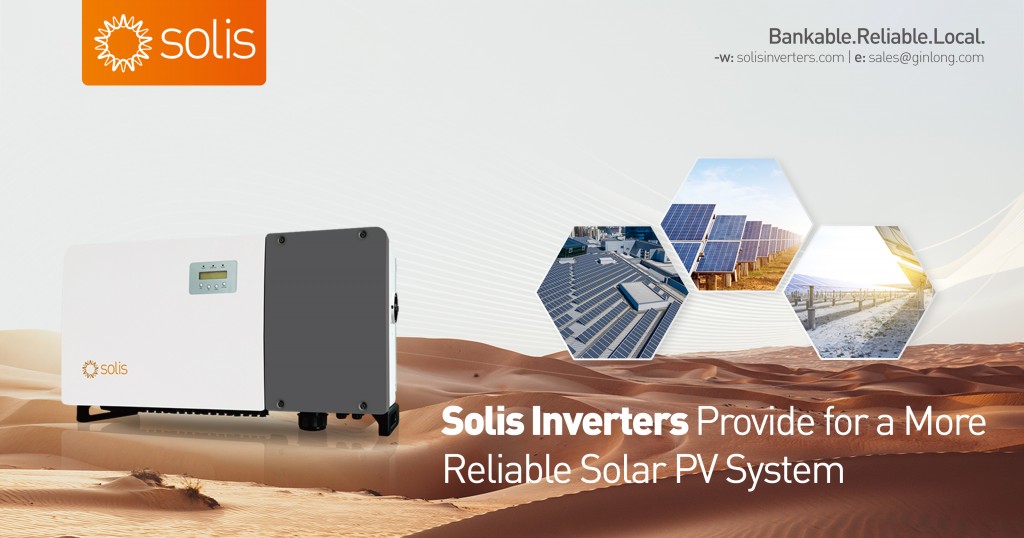Solis Seminar, Episode 36: The influence of winter on Solar PV system operation and related O&M considerations
16:40 | 16/12/2021
This Solis seminar will look into the effects of cold weather and share suggestions for keeping your solar plants running effectively through winter.
 |
The main impact of winter on PV plants
On the whole, the overall solar radiation intensity in winter is relatively low. Looking at the power generation of a PV plant in one year, summer is the peak period of power generation, and winter is the low period of power generation.
In addition, the main influences on the operation of solar power plants in winter are the following factors:
1) Low temperature
In cold weather, the ambient temperature in some areas often drops below freezing point (0°C), and in some severe cold areas may drop below -10°C;
Low temperature affects the operation of system equipment
Since the equipment in a solar PV system, such as solar panels, inverters, data collectors, batteries, etc., have a certain operating temperature range, when the temperature is lower than the allowable temperature of the equipment, it may affect normal operation. This should be considered when choosing the installation site and design of the system.
 |
Recommendation: Equipment should be sited in areas that have temperatures within the working limits of the equipment. Items such as energy storage batteries, household PV inverters, data collectors, etc., could be installed indoors or in a cold-proof environment.
Low temperature affects the Voc voltage of the PV system
Low temperature will cause the ope-circuit voltage(Voc) of PV strings to increase. If the initial design of the system does not fully consider the influence of temperature, during the later operation of the system, the string Voc under low-temperature conditions can exceed the maximum allowable input voltage of the inverter, which will likely cause damage.
 |
Taking a 20kW (maximum DC input voltage of 1100V) grid-tied PV system as an example, 52 475W PV panels are used. Assuming that the lowest temperature in the area during the day is -15°C, the string open-circuit voltage (Voc ). The following table:
 |
| Note: The open-circuit voltage temperature coefficient of this PV panel is -0.28%/℃, The value of this coefficient is different for different brands of PV panels |
 |
Recommendation: In the preliminary design of a PV plant, it is necessary to fully consider the Voc of the PV string in extremely low temperature. Reserve sufficient margin to prevent the DC overvoltage in the winter from causing damage to the inverter. If the system has a “OV-DC” alarm, it is necessary to immediately turn off the DC switch of the inverter and reduce the number of solar panels of the PV string.
2) Shading
In winter, the angle of sunlight is narrower and shadows are longer. Therefore, the PV array is more prone to shadow occlusion, which has a great influence on the power generation of the PV system.
 |
Recommendation: In winter, the cleaning of the solar panel surface is advised to avoid dirt accumulation. It is also recommended to keep overhanging trees well cut back to prevent the formation of shadows as well as removing furniture causing shadow if possible.
3) Snow cover
Another major problem facing PV plant operation in winter is snow accumulation. Snow covering the solar panel will reduce the solar radiation received by the solar panel and directly reduce the power generation. Moreover, the long-term uneven irradiation of the components may also cause greater hidden dangers due to the hot spot effect.
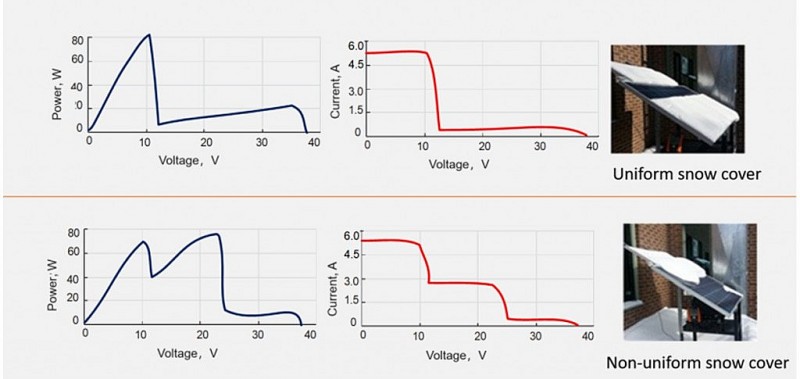 |
In addition, snow cover is also a major test for the structural design of the entire PV system due to its weight. Severe snow accumulation can even cause the PV array to collapse, causing equipment damage and personal injury and property losses.
Recommendation:
-
Clear snow from panels in good time
When a PV plant accumulates snow, it needs to be cleaned off in good time to prevent excessive snow accumulation forming into ice, making it heavy and difficult to clean. Please use soft objects for cleaning, do not scratch the glass, and do not step on the PV panel.
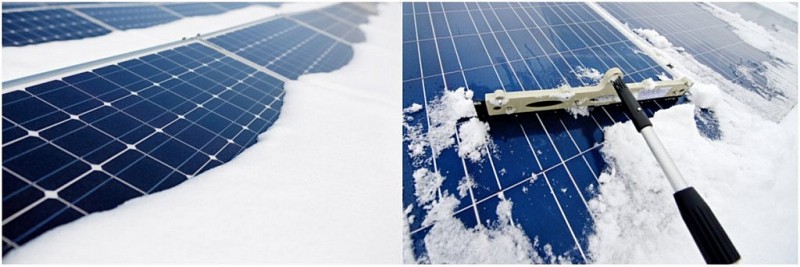 |
Snow removal includes not only solar panels, but also equipment such as inverters and power distribution cabinets. For example, timely clean-up of snow from the cooling air outlet of the inverter, will prevent the surface of the inverter and the external cooling fan from icing.
2. Adpt design and installation to local conditions
For areas with frequent snowfall, we need to increase the inclination angle of the solar panel within the optimal inclination range. Keeping within the limits of effective power generation, it is also convenient for snow on the surface of the solar panel to slide down on its own.
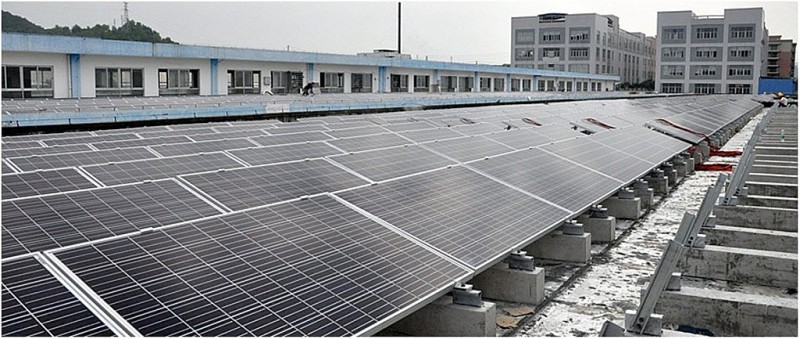 |
When installing, keep a certain distance between the bottom of the solar panel and the ground to prevent snow from accumulating on the bottom. In addition, it is recommended that solar panels be installed horizontally in areas where it snows frequently. Compared with vertical installations, this solution can ensure that there is enough space between the bottom of the solar panel and the ground to avoid snow stacking. Due to the structural characteristics of a solar panel, adopting horizontal installation is conducive to reducing the loss of power generation.
 |
It is also recommended to install the inverter in a place where snow can be avoided, such as under the solar panel array bracket, indoors, etc. If the inverter is installed in an open area, it is recommended to add a baffle to prevent excessive snow from blocking the cooling air duct of the inverter or adding extra weight to cause the inverter to fall and be damaged.
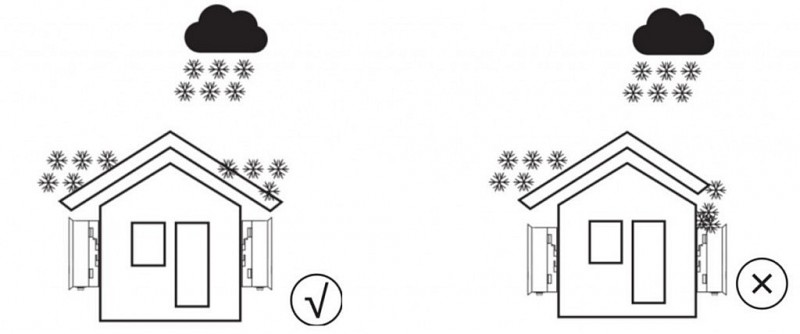 |
3. Online operation and maintenance
The severe cold, wind and snow in winter can cause great difficulties in the maintenance of a PV plant. Therefore, in addition to the operation and maintenance activities such as snow removal and equipment replacement, most of the PV plant inspection and operation and maintenance work is recommended to be remotely implemented through the Solis intelligent monitoring platform, SolisCloud.
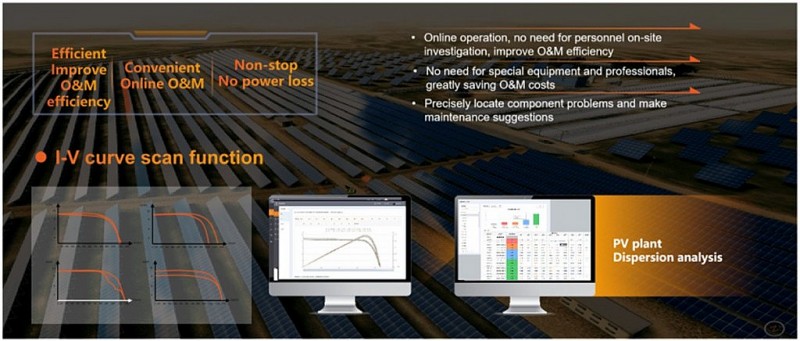 |
Summary
Winter is coming! In addition to the adequate protection of warm and cold protection measures, you also need to maintain your own photovoltaic power station, keeping the panels clean and clear of shadows. If snow falls, clear it swiftly to avoid potential damage and loss of power. Ensuring local conditions and weather patterns are taken into consideration when designing a new solar PV system will ensure that power is maintained during harsh winters.

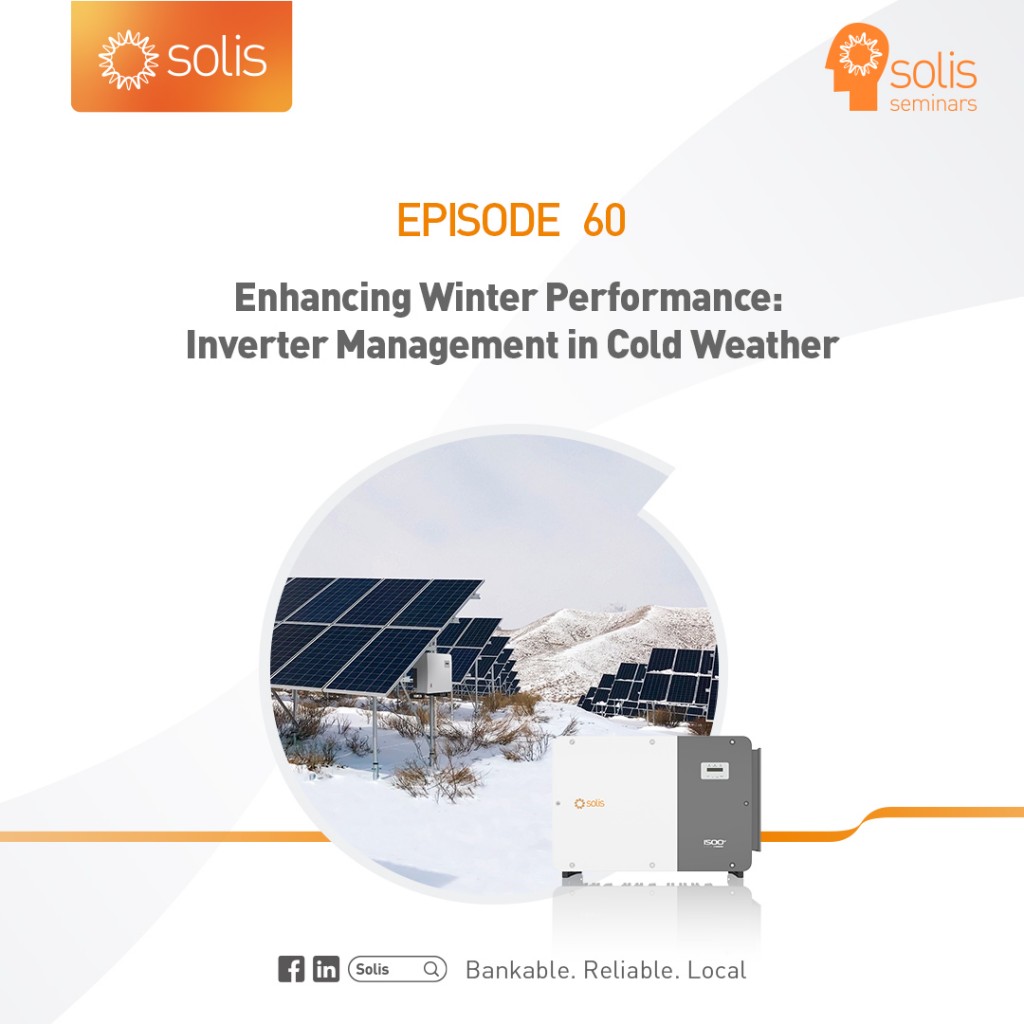
![Solis Seminar [Episode 56]: Online O&M dispersion analysis](https://vietnamenergy.vn/stores/news_dataimages/Lemy/092023/07/11/0940_Solis_1.jpg?rt=20230907111046?230907111707)
![Solis Seminar [Episode 55]: Using the piecewise method to check the PV string ground point](https://vietnamenergy.vn/stores/news_dataimages/Lemy/072023/24/10/1349_24.6.jpg?rt=20230724101530?230724103035)


